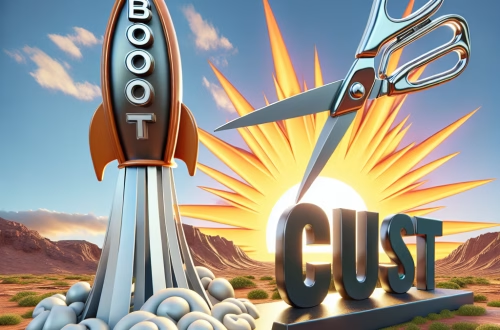Creative Writing with GPT-4
Summary:
Creative writing with GPT-4 revolutionizes how writers, educators, and enthusiasts approach storytelling, content creation, and ideation. GPT-4, OpenAI’s advanced language model, acts as an AI-powered collaborator that generates ideas, refines drafts, and overcomes creative blocks. Its ability to mimic human-like prose makes it invaluable for novices exploring AI’s potential in writing. Understanding how to harness GPT-4 effectively—while recognizing its limitations—is key to unlocking new creative frontiers safely and ethically.
What This Means for You:
- Accelerated Idea Generation: GPT-4 can brainstorm plot twists, character backstories, or poetry prompts in seconds. For novice writers, this reduces the intimidation of starting from scratch. Experiment with prompts like “Generate five fantasy quest ideas” to jumpstart projects.
- Improved Drafting Efficiency: Use GPT-4 as an editor for grammar, pacing, or dialogue. Actionable tip: Feed it a rough draft with the prompt “Improve the following scene’s emotional tension,” but always fact-check outputs for genre-specific accuracy.
- Skill Development Through Collaboration: Analyze GPT-4’s outputs to study narrative structures. Actionable tip: Compare AI-generated dialogue to human-written examples to learn nuances of subtext and voice.
- Future Outlook or Warning: While GPT-4 democratizes creative writing, over-reliance risks homogenizing storytelling. AI-generated content may inadvertently plagiarize existing works or reinforce biases. Future updates may address these issues, but writers must use AI ethically—disclose AI assistance and prioritize human oversight.
Explained: Creative Writing with GPT-4
Why GPT-4 Excels in Creative Writing
GPT-4 stands out for its ability to process context-heavy prompts and produce coherent, stylistically flexible text. Unlike earlier models, it manages complex narratives, genre-specific tropes (e.g., noir mysteries or epic fantasy), and multimodal brainstorming (e.g., generating imagery for poetry). Its 128k-token context window allows for analyzing longer texts, making it useful for series consistency or chapter-by-chapter editing.
Best Uses for Creative Writing
Overcoming Writer’s Block: Use prompts like “Expand this premise into a three-act structure: [your idea]”.
Worldbuilding: Request details on fictional cultures, maps, or magic systems. Example: “Design a steampunk city with unique social hierarchies.”
Dialogue Enhancement: Input character profiles and ask GPT-4 to generate conversations reflecting their personalities.
Strengths and Limitations
Strengths:
– Speed and versatility in generating ideas across genres.
– Adaptive tone control (e.g., shifting from academic to whimsical).
– Multilingual capabilities for non-native English speakers.
Weaknesses:
– Struggles with long-term narrative coherence beyond a few pages.
– May produce clichéd or overly verbose phrasing.
– Lacks genuine emotional depth—requires human refinement.
Prompt Engineering Tips
Effective prompts specify genre, tone, length, and constraints:
– Weak: “Write a horror story.”
– Strong: “Write a 500-word cosmic horror vignette from a detective’s POV, using unreliable narration.”
Use iterative refinement: Ask GPT-4 to “rewrite with more suspense” or “add sensory details.”
Ethical Considerations
Always disclose AI use in published work. GPT-4’s training data includes copyrighted material, so avoid derivative outputs. Platforms like Amazon KDP require AI-generated content disclosures, and literary journals often have similar policies.
People Also Ask About:
- Can GPT-4 replace human writers?
No—it lacks intentionality and lived experience. While it assists with drafts and ideas, human creativity drives originality. Use it as a tool, not a replacement. - How do I avoid plagiarism with GPT-4?
Run outputs through plagiarism checkers (e.g., Copyleaks) and modify content significantly. GPT-4 can unintentionally mimic copyrighted phrases, so human editing is essential. - What genres work best with GPT-4?
Genre fiction (sci-fi, romance, thriller) adapts well due to formulaic structures. Experimental or literary fiction requires heavier editing to inject unique voice. - Is GPT-4 useful for poetry?
Yes, especially for forms like haiku or sonnets. Use constraints: “Write a villanelle about loss with nature metaphors.” However, meter and emotional resonance often need polishing.
Expert Opinion:
Experts caution that GPT-4’s outputs, while impressive, lack the subconscious nuance of human writing. Over-dependence may stifle skill development in younger writers. Trends show growing adoption in education for brainstorming, but institutions are developing AI ethics guidelines. Writers should prioritize copyright safety, fact-checking AI-generated lore, and maintaining stylistic ownership.
Extra Information:
- OpenAI’s GPT-4 Creative Writing Guide (http://platform.openai.com/docs/creative-writing): Explores prompt design and ethical best practices tailored to writers.
- Sudowrite (http://sudowrite.com): A GPT-4-powered writing tool with features like “Describe” and “Brainstorm” for fiction authors.
- National Novel Writing Month AI Resources (http://nanowrimo.org/ai-writing-tools): Tips for integrating AI into drafting during NaNoWriMO.
Related Key Terms:
- Prompt engineering for writers using GPT-4
- AI-assisted fiction writing best practices
- How to avoid AI plagiarism in creative writing
- GPT-4 for genre-specific storytelling
- Ethical AI writing collaboration guidelines
Check out our AI Model Comparison Tool here: AI Model Comparison Tool
#creative #writing #GPT4
*Featured image provided by Pixabay





